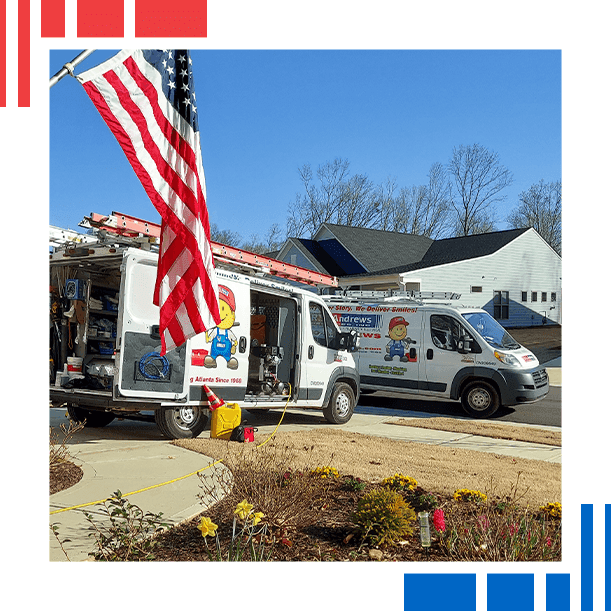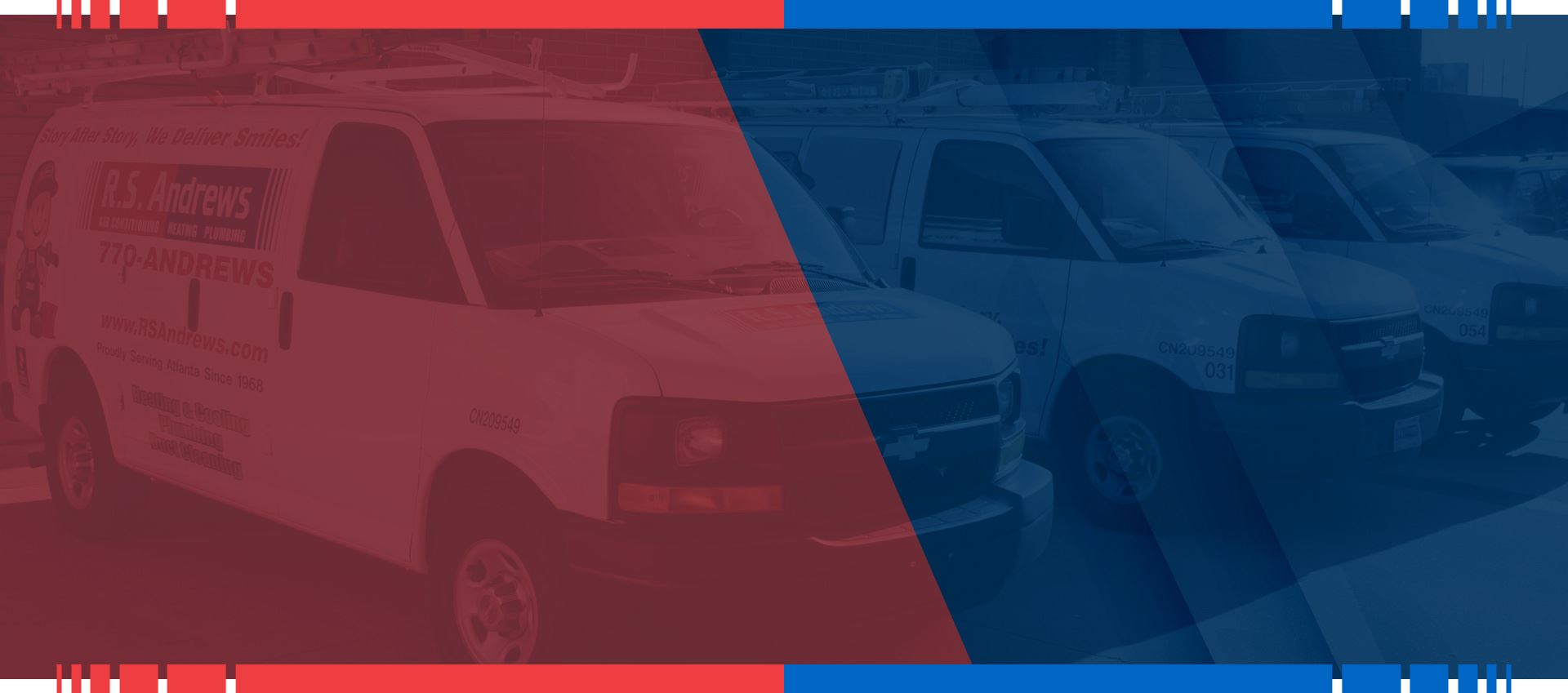
HVAC & Plumbing Services In Bluffton, SC
Residential & Commercial HVAC Services in the Coastal Lowcountry Area
When you step into your home after a long day or into your workplace in the morning, comfort should be a given, not a luxury. At R.S. Andrews, we understand the unique climate challenges that our customers face, from humid summers to brisk winters and everything in between.
Our licensed and insured team is dedicated to helping your heating, cooling, and plumbing systems operate flawlessly so that you can relax and continue your daily routine without inconveniences or interruptions.
With over five decades of experience, we pride ourselves on delivering high-quality HVAC services tailored to the needs of both residential and commercial spaces.
Our commitment extends beyond mere functionality. At R.S. Andrews, we integrate ultimate technology and advanced diagnostic tools to preemptively identify potential issues.
This proactive approach not only enhances system efficiency but also extends the lifespan of your equipment, offering additional savings on future repairs or replacements.
Our team’s deep understanding of Bluffton's specific climatic conditions allows us to tailor each service to maximize indoor air quality and ensure optimal comfort throughout the year.
Our customers value comfort and convenience, and that's exactly what R.S. Andrews delivers. Whether you need a quick HVAC repair or are planning to upgrade your plumbing system, our NATE-certified technicians are here to assist you around the clock with same-day service and emergency appointments.
Investing in top-quality HVAC systems can transform your living or working space. Our range of services not only includes installations and repairs but also routine maintenance plans designed to preserve the efficiency of your systems. Regular check-ups ensure your systems are at peak performance while minimizing energy consumption and lowering utility bills.
We believe in empowering our customers with knowledge, offering guidance on energy-saving practices and system upgrades that deliver long-term comfort and benefits.
Ready to see what R.S. Andrews can do for you? Call us at (843) 474-6701 to request a same-day service appointment!
current specials

Our Reviews
See What Our Satisfied Customers Have To Say
-
“They were there when they said they would be, got the job done well and in good time at the fair price they quoted me AND the area they worked in was cleaner than how they found it! What more could you ask for?!”- Elizabeth
-
“Matthew was the RS Andrews representative that met with us several times to discuss our options. He thoroughly explained the choices that were available. I have recommended him to several people that needed HVAC assistance.”- Larry S.
-
“Excellent service!! I called Matthew Di Benedetto after 5 o clock saying my HVAC went out and he was over at my place with a tech within 30 minutes.”- Jill B.
-
“And he is also the one I can call for problems or questions. He is very responsive. Or I can just call the office, which is also very efficient. The T & T install team did a fine job as well, and they were really nice young men.”- Danna S.

Why Choose R.S. Andrews for your home services?
Choosing R.S. Andrews means working with a team that truly prioritizes your comfort and satisfaction. We stand out from our competitors by offering a combination of quality and convenience that is unmatched in our community.
At R.S. Andrews, we integrate cutting-edge techniques and sustainable practices to ensure that our services have a minimal environmental impact. We actively pursue green technologies and efficient systems that contribute to reducing our carbon footprint while maximizing your energy savings.
This responsible approach not only benefits the environment but also translates to reduced costs for our customers, setting us apart as an environmentally conscious HVAC company.
With R.S. Andrews, you can trust that your HVAC and plumbing needs are managed by professionals committed to excellence. Moreover, our focus on continuous training and development ensures that our team stays ahead of industry advancements, enabling us to provide innovative solutions that meet the evolving demands of our clients.
To learn more about our team, our services, & our qualifications, call R.S. Andrews at (843) 474-6701 or contact our Bluffton team online today!
R.S. Andrews Can Offer You:
- Knowledge: Our team brings over five decades of experience in the HVAC and plumbing industry, ensuring you receive informed and effective solutions tailored to your needs.
- Experience: We have a proven track record of successfully addressing the unique climate challenges of the Coastal Lowcountry area, allowing us to provide reliable service to both residential and commercial properties.
- Certified Technicians: Our team is NATE certified, meaning that we have met rigorous industry standards and can deliver the best possible care for your systems.
- Financing: We understand that unexpected repairs and upgrades can come with financial burdens, which is why we offer flexible financing options to fit your budget. Our goal is to ensure every customer feels supported, offering a variety of payment plans so you can enjoy our services without financial strain. We aim to make quality HVAC and plumbing solutions accessible to everyone in the Bluffton area.
- Exceptional Products: As certified partners of trusted manufacturers like Lennox and Rinnai, we give our customers access to top-of-the-line equipment that combines efficiency with performance to ensure your home is comfortable year-round.
- Warranties: Our commitment to quality is reflected in the warranties we provide on select products and services. These warranties offer peace of mind, assuring you that your investment is protected. We are committed to integrity and stand behind our offerings, ensuring you're covered in every scenario.
- Convenience: R.S. Andrews is available 24/7 for your needs, providing same-day, weekend, & emergency appointments whenever possible to ensure you’re never left in discomfort. Our extensive service hours reflect our dedication to being available for you when you need us most, offering versatile scheduling options for your convenience.
- Security: Our BBB accreditation and background-checked technicians give you added confidence, knowing that your home is in the hands of trusted professionals who adhere to the highest standards. Each team member undergoes rigorous screening and training, representing our unwavering commitment to professionalism and customer safety within every service we provide.
FAQ About HVAC Services in Bluffton
What HVAC Services Do We Offer in Bluffton?
At R.S. Andrews, we provide a comprehensive range of HVAC services tailored to meet the needs of both residential and commercial clients in Bluffton. Our services include installation, repair, and maintenance of heating and cooling systems. Additionally, we offer emergency services to ensure that any urgent issues are promptly addressed 24/7. Whether it's upgrading to a more energy-efficient system or routine system checks to maintain peak performance, we have a solution that fits your requirements.
How Does Bluffton's Climate Affect HVAC Needs?
The climate in Bluffton, characterized by hot, humid summers and mild winters, necessitates a reliable HVAC system to maintain indoor comfort throughout the year. High humidity and heat during the summer months can put a significant strain on air conditioning systems, making regular maintenance essential to avoid wear and tear. Similarly, a well-functioning heating system is crucial during the milder winters to ensure consistent warmth without unexpected breakdowns.
Why Should I Choose R.S. Andrews Over Other HVAC Companies?
Choosing R.S. Andrews means opting for a company with a long-standing presence in the Bluffton community, with over five decades of proven experience. Our commitment to quality, backed by NATE-certified technicians and partnerships with top manufacturers like Lennox and Rinnai, ensures that you receive the best service and products available. Our dedication to customer satisfaction and flexible, value-driven service options sets us apart in the HVAC industry.
What Are the Benefits of Regular HVAC Maintenance?
Regular HVAC maintenance offers numerous benefits, including improved energy efficiency, extended system lifespan, and reduced risk of breakdowns. By scheduling routine checks and tune-ups, you can ensure that your system operates optimally, especially during peak seasons. Our maintenance plans are designed to catch issues early, provide necessary upgrades, and offer tips for maintaining a healthy system, thus minimizing unexpected repair costs over time.
Do You Offer Financing Options for HVAC Services?
Yes, at R.S. Andrews, we understand that HVAC repairs and installations can represent a significant financial investment. To ease this process for clients in Bluffton, we offer flexible financing options that make it easier to achieve the comfort you desire without financial strain. Whether you're investing in a new system or need substantial repairs, our financing plans are designed to accommodate varying budgets and ensure you receive the best services without delay.

We believe a business should be a positive force for the area in which it thrives. See how R.S. Andrews helps out our neighbors in the Lowcountry & Coastal Empire.

-
 24/7 Emergency Service
24/7 Emergency Service -
 Need Financing?
Need Financing? -
 Story After Story, We Deliver Smiles
Story After Story, We Deliver Smiles -
 Looking For More Information?
Looking For More Information?













